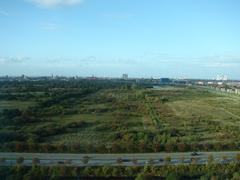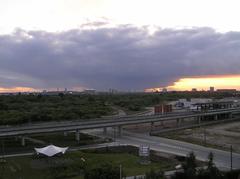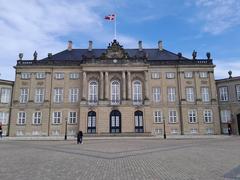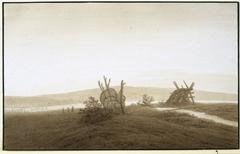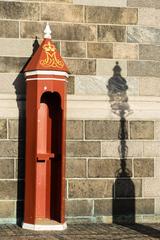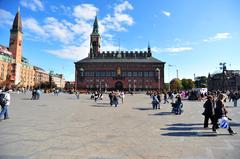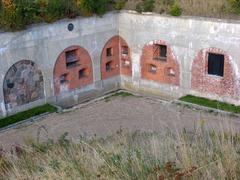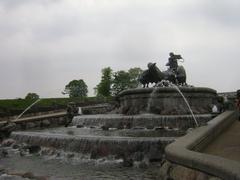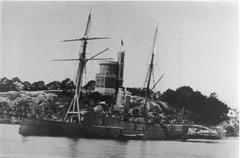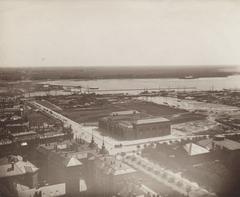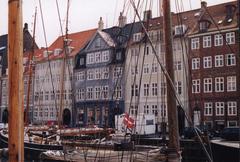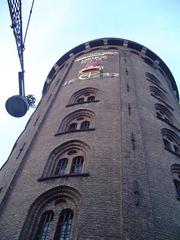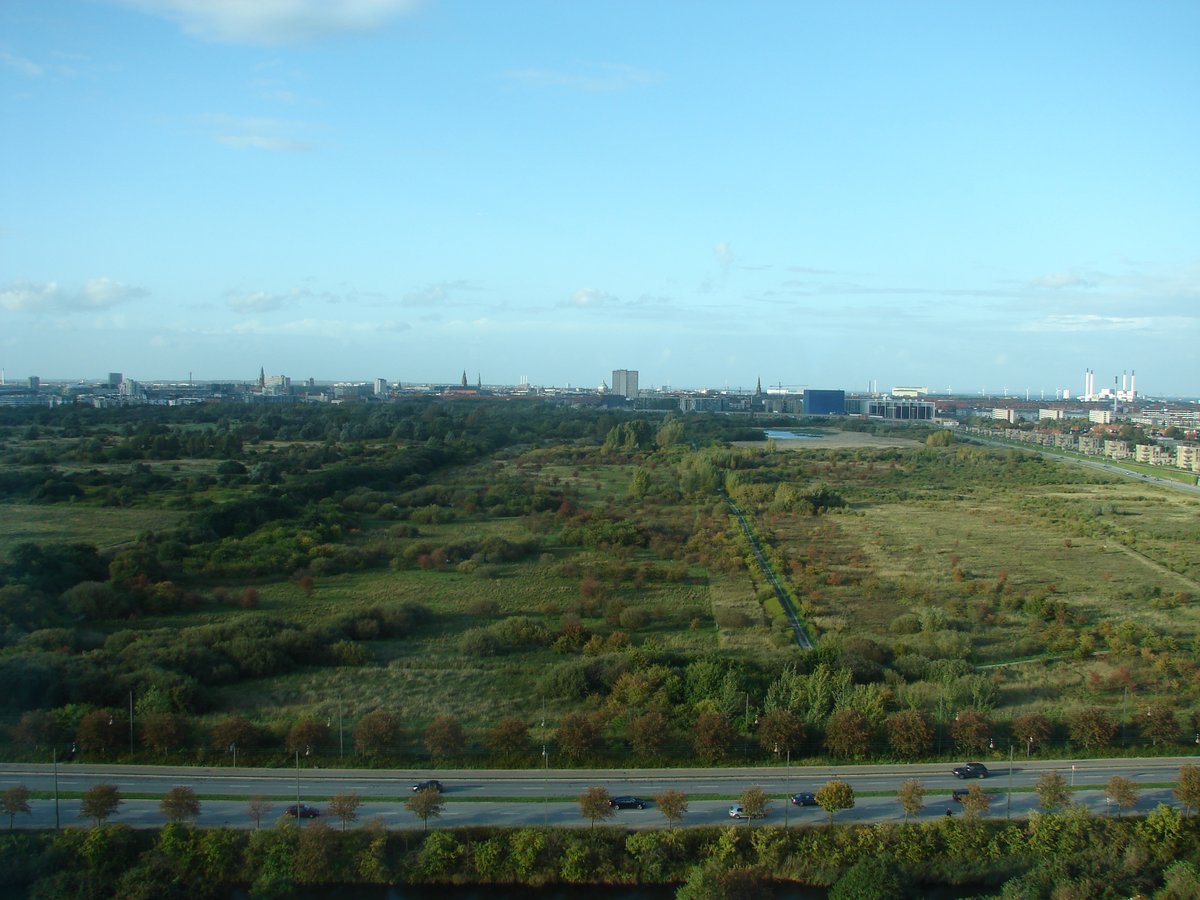
Visiting Amager Fælled: Hours, Tickets, and Attractions in Frederiksberg, Denmark
Date: 20/07/2024
Introduction
Amager Fælled, an expansive natural reserve in Frederiksberg, Denmark, serves as an ecological sanctuary and a vital recreational space within Copenhagen’s urban landscape. Rich in history and biodiversity, it offers a unique blend of cultural heritage, natural beauty, and modern urban amenities. Originally part of the larger island of Amager, the area has evolved from medieval marshlands used for grazing to a cherished green space balancing urban development with environmental conservation. The influence of Dutch settlers in the 16th century, who transformed the marshlands into fertile agricultural fields, is still evident today. Over the centuries, Amager Fælled transitioned from agricultural land to a military training ground, and finally, to a protected nature reserve (Visit Copenhagen). This guide will explore the historical significance of Amager Fælled, provide practical visitor information such as visiting hours and ticket prices, and offer travel tips to help you make the most of your visit.
Table of Contents
- [Introduction](#introductionintroduction)
- [Historical Background](#historical-backgroundhistorical-background)
- [Early History and Formation](#early-history-and-formationearly-history-and-formation)
- [16th Century - Dutch Influence](#16th-century---dutch-influence16th-century---dutch-influence)
- [18th and 19th Centuries - Urbanization and Industrialization](#18th-and-19th-centuries---urbanization-and-industrialization18th-and-19th-centuries---urbanization-and-industrialization)
- [20th Century - Conservation Efforts](#20th-century---conservation-efforts20th-century---conservation-efforts)
- [Post-War Development and Modern Era](#post-war-development-and-modern-erapost-war-development-and-modern-era)
- [Recent Controversies and Future Prospects](#recent-controversies-and-future-prospectsrecent-controversies-and-future-prospects)
- [Cultural Significance](#cultural-significancecultural-significance)
- [Notable Landmarks and Features](#notable-landmarks-and-featuresnotable-landmarks-and-features)
- [Visitor Information](#visitor-informationvisitor-information)
- [Visiting Hours and Tickets](#visiting-hours-and-ticketsvisiting-hours-and-tickets)
- [Travel Tips and Accessibility](#travel-tips-and-accessibilitytravel-tips-and-accessibility)
- [Special Events and Guided Tours](#special-events-and-guided-toursspecial-events-and-guided-tours)
- [Photographic Spots](#photographic-spotsphotographic-spots)
- [FAQ](#faqfaq)
- [Conclusion](#conclusionconclusion)
- [References](#referencesreferences)
Historical Background
Early History and Formation
Amager Fælled’s history dates back to the early medieval period. Originally part of the larger island of Amager, formed during the last Ice Age, the land was primarily marshland used by local communities for grazing livestock. The name “Fælled” translates to “common” in English, indicating its historical use as common land for the local populace.
16th Century - Dutch Influence
In the 16th century, King Christian II invited Dutch farmers to settle on Amager Island to improve agricultural practices. These settlers brought advanced farming techniques and transformed the marshlands into fertile agricultural fields. The Dutch influence is still evident today in the architecture and layout of the area. The settlers were granted special privileges, including tax exemptions, which helped them establish a thriving community.
18th and 19th Centuries - Urbanization and Industrialization
The 18th and 19th centuries saw significant changes in Amager Fælled due to urbanization and industrialization. The area began to develop as part of the expanding city of Copenhagen. The construction of roads and railways facilitated easier access, leading to increased settlement and industrial activities. During this period, the land was also used for military exercises and as a training ground for the Danish army.
20th Century - Conservation Efforts
The 20th century marked a turning point for Amager Fælled as conservation efforts began to take shape. In the 1930s, the Danish government recognized the ecological importance of the area and initiated measures to protect its unique flora and fauna. The establishment of nature reserves and protected areas helped preserve the natural landscape, making it a haven for wildlife and a popular spot for outdoor activities.
Post-War Development and Modern Era
After World War II, Amager Fælled underwent further development, but with a focus on balancing urban growth with environmental conservation. The area became a crucial green space for the residents of Frederiksberg and Copenhagen. In the 1990s, the Copenhagen Municipality launched the “Green Plan,” which aimed to enhance the city’s green spaces, including Amager Fælled. This plan led to the creation of walking trails, cycling paths, and recreational facilities, making it a popular destination for both locals and tourists.
Recent Controversies and Future Prospects
In recent years, Amager Fælled has been at the center of several controversies regarding land use and development. Proposals to build residential and commercial complexes have faced strong opposition from environmental groups and local residents. These debates highlight the ongoing struggle to balance urban development with the need to preserve natural habitats. As of 2024, the future of Amager Fælled remains a topic of public interest and debate.
Cultural Significance
Amager Fælled holds significant cultural value for the people of Frederiksberg and Copenhagen. It serves as a living reminder of the region’s agricultural past and the Dutch influence that shaped its development. The area is also a symbol of Denmark’s commitment to environmental conservation and sustainable urban planning. Various cultural events, such as outdoor concerts and community gatherings, are held in Amager Fælled, further cementing its role as a vital part of the local community.
Notable Landmarks and Features
Amager Fælled is home to several notable landmarks and features that reflect its historical and cultural heritage:
- The Dutch Windmill: A historic windmill built by the Dutch settlers, which stands as a testament to their agricultural contributions.
- The Military Training Grounds: Remnants of the area used for military exercises, now repurposed as open spaces for public use.
- Nature Reserves: Protected areas that showcase the diverse flora and fauna of Amager Fælled, attracting nature enthusiasts and researchers alike.
Visitor Information
Visiting Hours and Tickets
Amager Fælled is open to the public year-round. There are no entrance fees, making it an accessible destination for everyone. However, some special events or guided tours may require tickets. It’s best to check the official website of Copenhagen Municipality for the most current information.
Travel Tips and Accessibility
- Best Times to Visit: Spring and summer are the best times to visit Amager Fælled when the flora is in full bloom and the weather is ideal for outdoor activities.
- Accessibility: Amager Fælled is accessible by public transportation, with several bus and metro lines stopping nearby. The area is also equipped with paved paths suitable for wheelchairs and strollers.
- Nearby Attractions: Frederiksberg is home to other historical sites such as Frederiksberg Palace and Frederiksberg Gardens, which are worth a visit.
Special Events and Guided Tours
Amager Fælled hosts various special events throughout the year, including outdoor concerts, nature walks, and community festivals. Guided tours are available and can provide a deeper understanding of the area’s ecological and historical significance. Check the Amager Fælled Nature Center for details on upcoming events and tour schedules.
Photographic Spots
- The Dutch Windmill: Offers a picturesque backdrop that captures the historical essence of Amager Fælled.
- Nature Reserves: Perfect for capturing the diverse wildlife and natural beauty of the area.
- Sunset Views: The open landscapes provide stunning sunset views, ideal for photography enthusiasts.
FAQ
- When is the best time to visit Amager Fælled?
- The best times to visit are during spring and summer when the flora is in full bloom and the weather is ideal for outdoor activities.
- Are guided tours available at Amager Fælled?
- Yes, guided tours are available and can provide a deeper understanding of the area’s ecological and historical significance. Check the Amager Fælled Nature Center for details on upcoming tours.
- Is Amager Fælled accessible for people with disabilities?
- Yes, Amager Fælled is equipped with paved paths suitable for wheelchairs and strollers.
Conclusion
Amager Fælled stands as a testament to the dynamic interplay between human activity and natural preservation. Its transformation from marshland to a thriving green space reflects Copenhagen’s commitment to sustainable urban planning and environmental conservation. The area not only offers a haven for wildlife and a recreational space for residents and tourists but also serves as a living museum of the region’s agricultural and military history. Despite recent controversies over land use, Amager Fælled remains a crucial ecological and cultural asset for Frederiksberg and Copenhagen. By visiting this unique natural reserve, you are not only enjoying its beauty but also supporting the ongoing efforts to preserve its rich biodiversity and historical significance. For more detailed information, visit the official website of Copenhagen Municipality and the Amager Fælled Nature Center.
